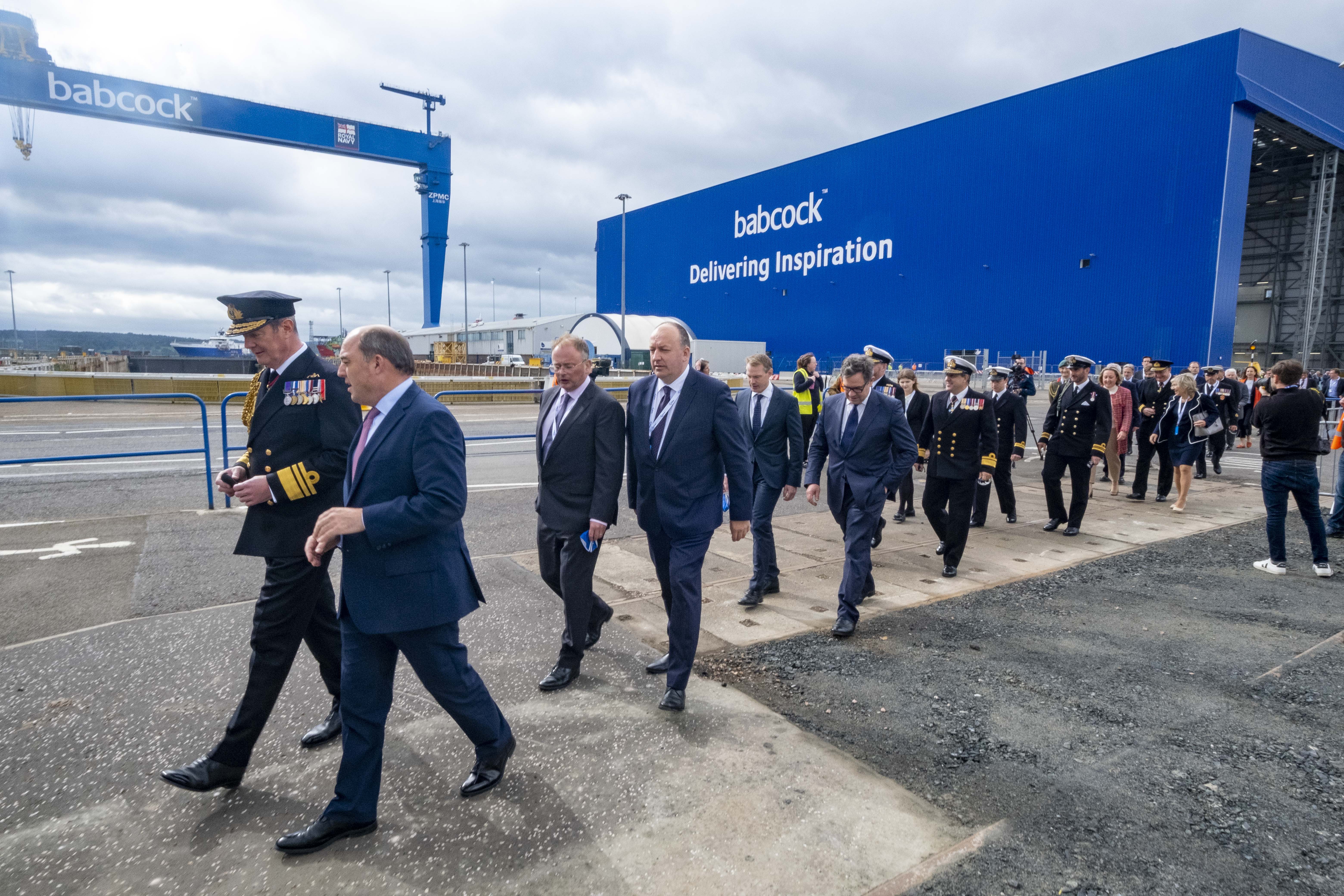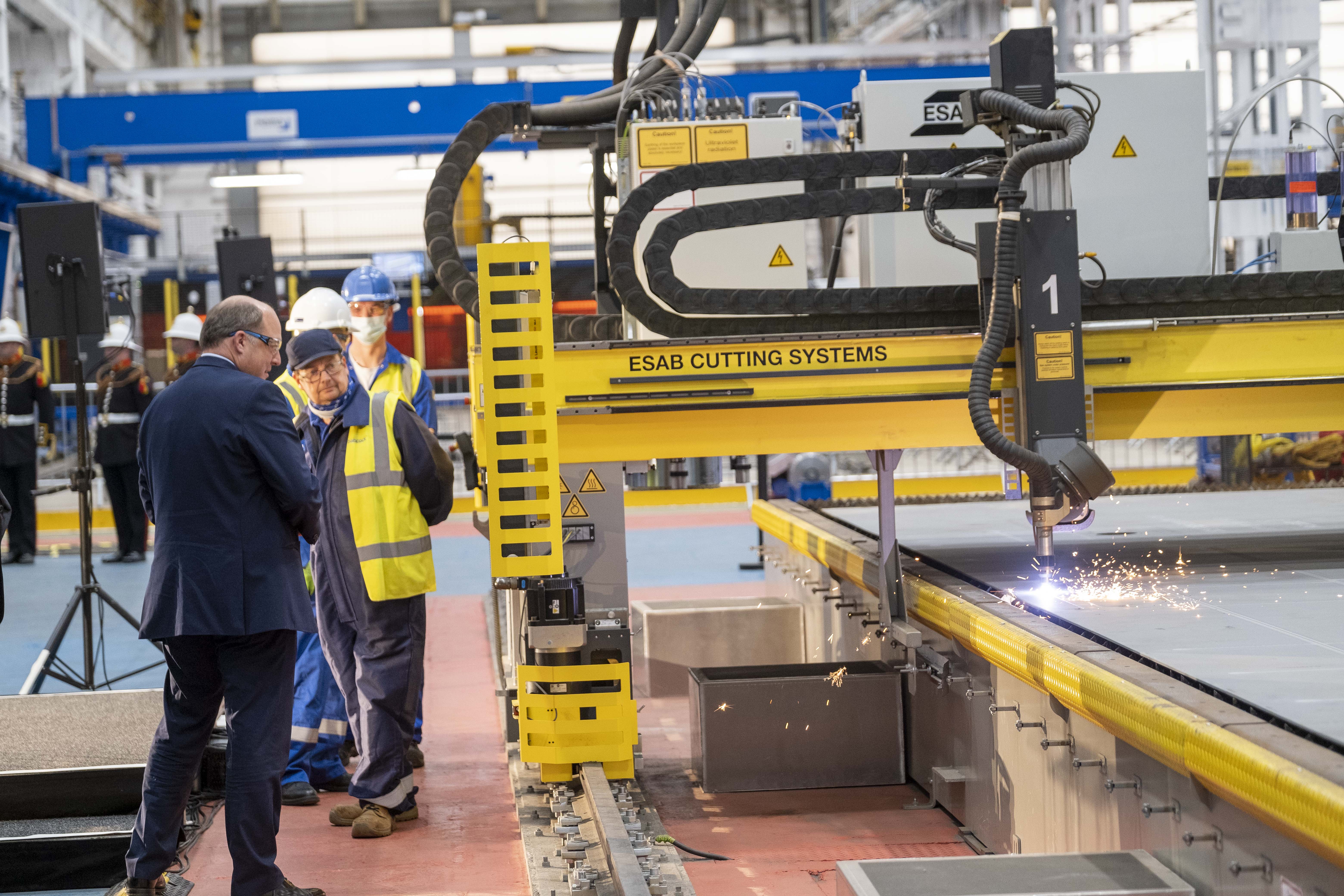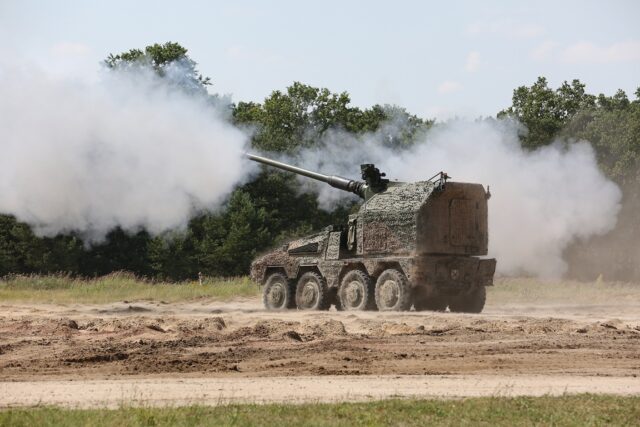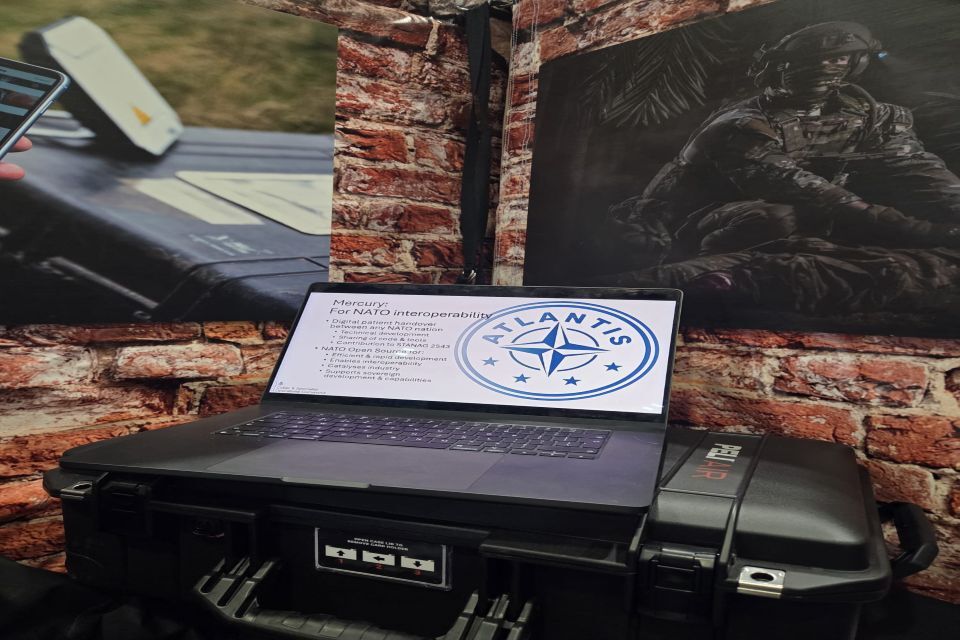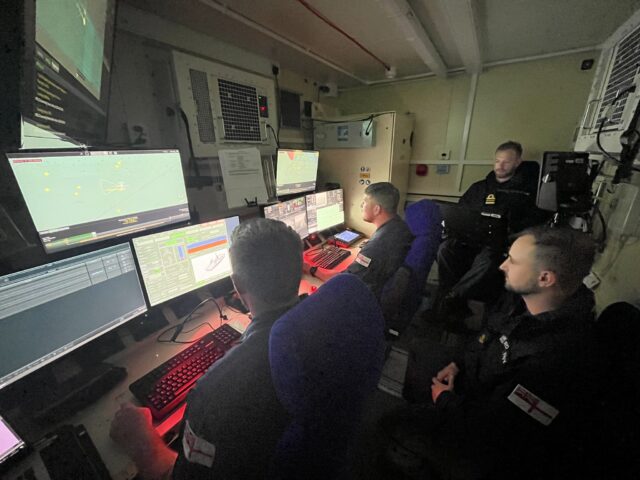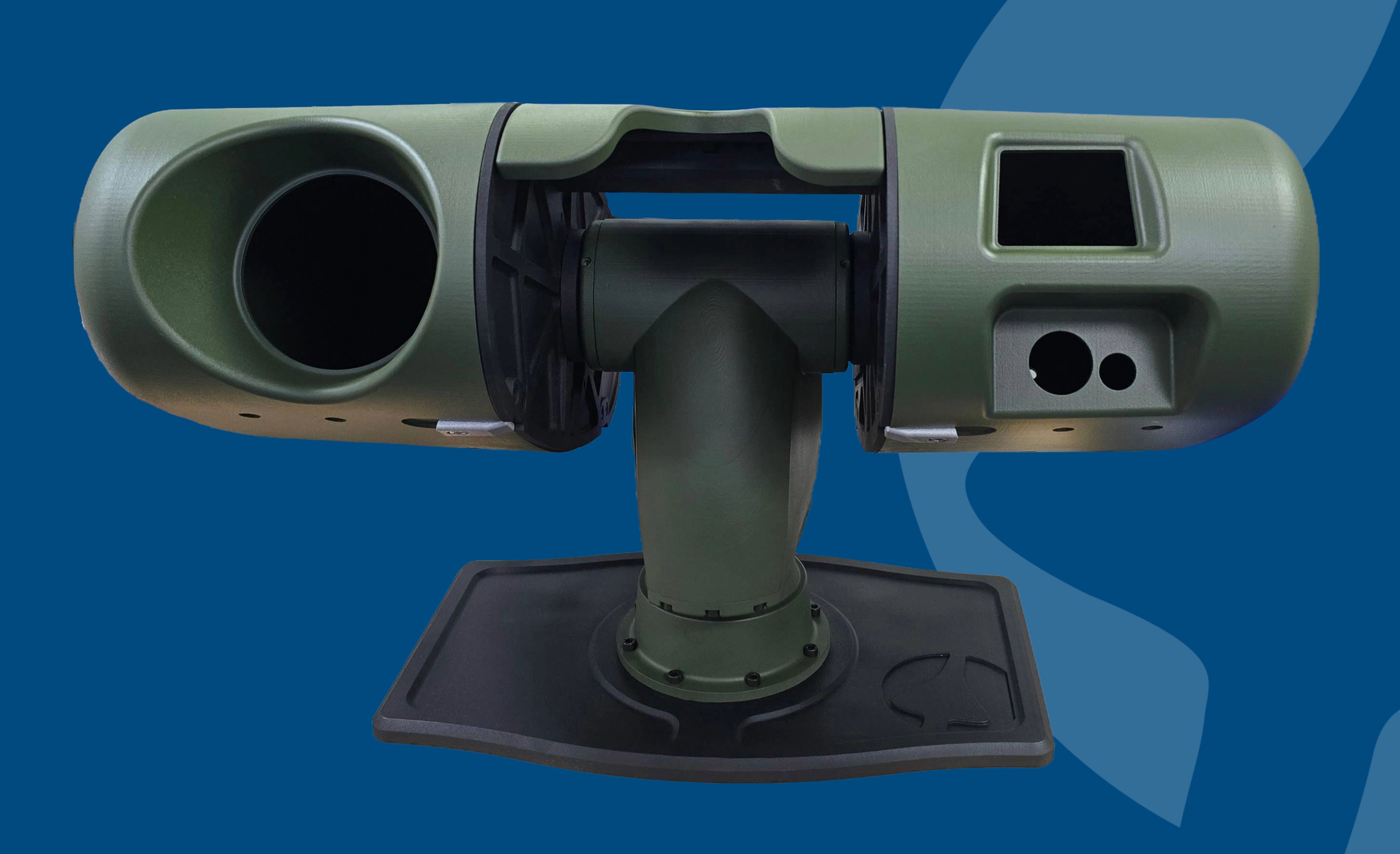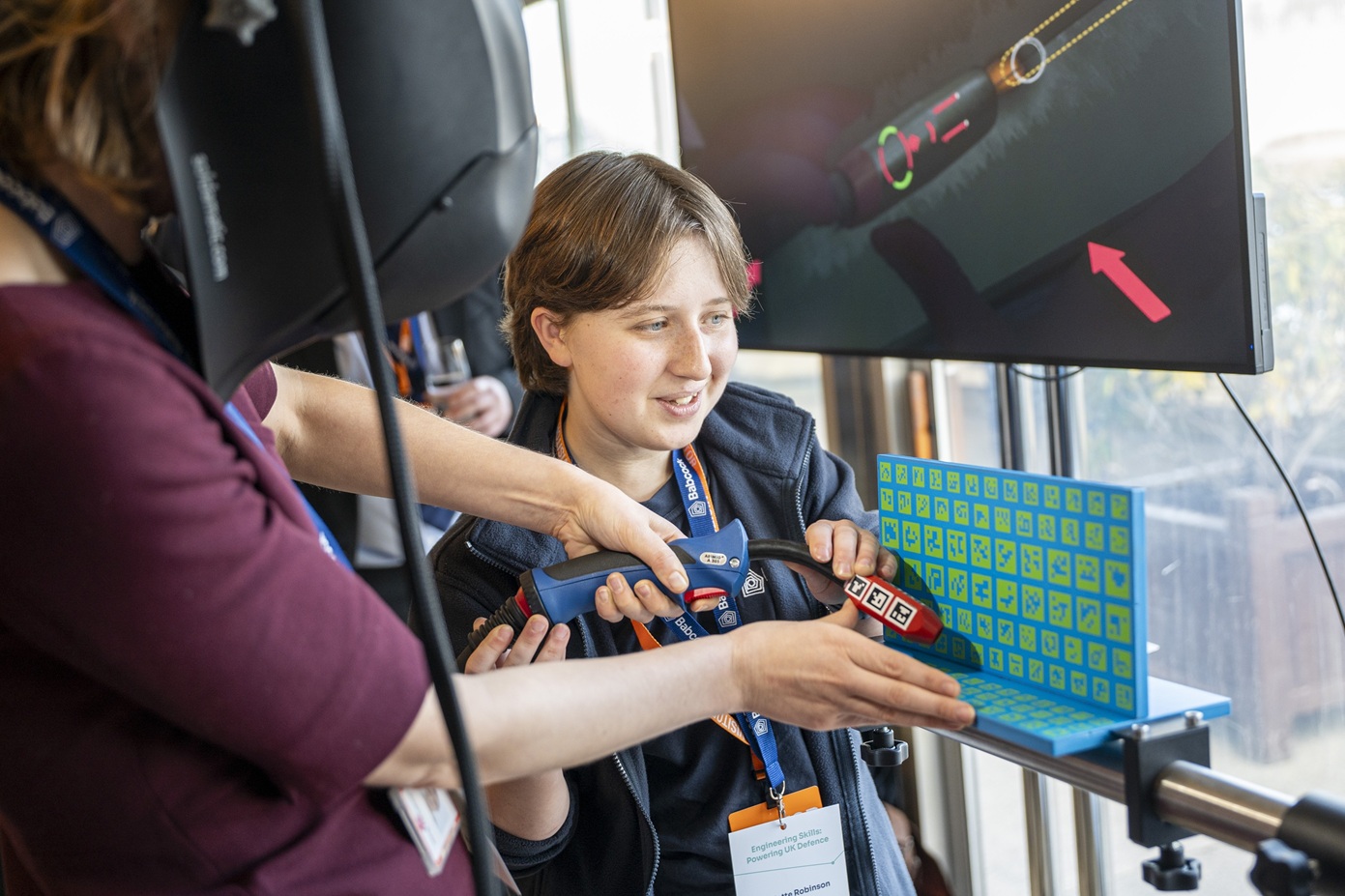Babcock cuts steel for Royal Navy’s HMS Venturer at Rosyth
Above:
Babcock’s Rosyth facility has seen significant investment in the last decade and is embarking on a new era of digitising facilities and systems to bring advancements and efficiencies into the manufacturing, build and assembly process for the frigates, which includes the installation of additional Advanced Manufacturing capability and the new construction hall, capable of housing two Type 31 frigates.
Courtesy Babcock
Hosted at Babcock’s facility in Rosyth, Scotland, where the Type 31 Inspiration class ships are being built, representatives from across UK and international industry and public service, witnessed the historic ceremony signalling the official start of the build programme alongside employees and representatives from the local community. The frigates will be at the heart of the Royal Navy’s surface fleet, deterring aggression and maintaining the security of the UK’s interests as well as providing humanitarian relief when needed.
The frigates will work alongside the UK’s Allies to deliver a warship presence across the globe and enable a forward naval presence. The symbolic first cut of steel for HMS Venturer was conducted at Babcock’s new advanced manufacturing facility, a cornerstone of the company’s digital transformation at Rosyth, which includes panel lines with robotic welding capability, as well as other semi-automated manufacturing machines.
The technology, based on modern shipbuilding practices, enables Babcock to increase automation and create significant efficiencies in the build schedule.
The event comes just one week after Babcock announced that it had secured the first export contract for its Arrowhead 140 frigate (the export variant of the UK Type 31 platform) through a design licence agreement with PT PAL Indonesia (Persero) for two frigates. The company has also been shortlisted as one of the bidders to provide a potential design solution for Poland’s Miecznik (Swordfish) frigate programme.
The event also saw Babcock’s new assembly hall named ‘The Venturer Building’ – paying homage to the first new class of frigates to be built in the facility.
This vast structure measuring 147m x 62m x 42m is capable of housing two Type 31 frigates for parallel build and assembly activity. It will enable uninterrupted assembly, supporting increased productivity gains through improved access and digital connectivity. The new infrastructure forms part of a £60 million investment programme on the site, on top of a further £100 million that has been invested over the last decade to ensure Rosyth’s shipbuilding capability and capacity can be optimised with state of the art engineering infrastructure and digital innovation to support further opportunities.
Babcock CEO David Lockwood said: “This is a significant moment. We are witnessing what the National Shipbuilding strategy can achieve. Working with our partners and customers, we are creating something we can all be very proud of. The T31 Class will show the adaptability and capability of a modern warship created with British ingenuity and engineering at its core. I’m looking forward to seeing these magnificent vessels emerge from our newly-named Venturer Building.”
Defence Secretary and Shipbuilding Tsar Ben Wallace said: “Today is a momentous occasion for the Type 31 programme, Defence and the shipbuilding industry in Scotland. As Shipbuilding Tsar, to cut the steel for the first of five new frigates that will be constructed here on our shores in the Firth of the Forth, providing jobs and innovation to the area, is a tremendous honour.
“Equipped with the technologies at the forefront of the Royal Navy’s future vision, the entire Type 31 fleet will be fitted with a range of capabilities allowing it to undertake a variety of operations at sea.”
Scottish Secretary Alister Jack said: "It’s hugely exciting to see construction of the first of the British military’s new Type 31 warships beginning at Babcock’s Rosyth dockyard on the Firth of the Forth.
"When complete HMS Venturer - and the rest of the five Scottish built fleet - will help protect the UK and our NATO allies and provide humanitarian support.
"This £1.25billion investment, alongside the Type 26 programme by BAE Systems on the River Clyde at Govan, is boosting our country’s prosperity through supporting thousands of jobs and enhancing Scotland’s reputation as a world leader in shipbuilding."
The newest of the Royal Navy’s frigate fleet will undertake a variety of roles on operations including interception and disruption of illegal activity at sea, intelligence gathering, Defence engagement and providing humanitarian support.
The Type 31 will be equipped with innovative technology and will benefit from advanced capabilities fitted onboard, including MBDA’s Sea Ceptor, a supersonic anti-air missile defence system, as well as a 57mm and two 40mm Bofors naval guns, a 4D radar system and able to house a Royal Navy helicopter.
With agility and flexibility integral to its design, the Type 31 weapon systems will also be adapted throughout its lifespan to counter future threats and ensure each ship can be equipped to deliver a forward naval presence across the globe.
Known as the Inspiration class, the five Type 31 vessels all take their names from former warships and submarines whose missions and history are intended to inspire Royal Navy operations, as well as a representation of its future vision. The four remaining ships in the Class were recently announced as HMS Active, HMS Formidable, HMS Bulldog and HMS Campbeltown.
Constructed in 1942, the original HMS Venturer was a World War Two V-class submarine that most notably was the first to sink another submarine, a German U-boat, while both were submerged using its technological and intelligence advantage over the enemy. Almost 80 years later since construction started on the original HMS Venturer, its Type 31 depiction draws on its historical achievements and aims to promote the Royal Navy’s technological and innovative forward-look.
Minister for Defence Procurement, Jeremy Quin said: "Type 31, built at Rosyth and supporting over 2,000 jobs, is a hugely important future capability for the Royal Navy and represents a significant export opportunity to friends and allies overseas."
As announced by the Prime Minister last November, Defence has received an increase in funding of over £24 billion across the next four years, enabling our Armed Forces to adapt to meet future threats of which the Type 31 will form a part. Enhanced by commitments outlined in the Defence Command Paper, the new frigates will form part of the Royal Navy Integrated Force 2030 vision and will replace the five general-purpose Type-23 frigates currently in service with the Royal Navy.
During his visit to the Rosyth dockyard, the Defence Secretary, accompanied by the Minister for Defence Procurement Jeremy Quin and Director General Ships Vice Admiral Chris Gardner of Defence Equipment and Support (DE&S), also unveiled a plaque to mark the formal commissioning of Babcock’s new Assembly Hall. As part of a wider £35 million site investment by Babcock, the state-of-the-art and digitised facility will be capable of housing two Type 31 vessels alongside each other during their build phase.
Second Sea Lord, Vice Admiral Nick Hine said: "This is an exciting time for the Royal Navy. The Type 31 represents the very best of British shipbuilding and with its modular design will be configurable to meet the needs of both the Royal Navy and our allies around the world, now and into the future.
"Type 31s will operate across the globe with sustained forward presence, further signifying our intent of being a global navy and the foremost naval power in Europe."
Director General Ships at Defence Equipment & Support, Vice Admiral Chris Gardner said: "I am incredibly proud of the Type 31 team at DE&S who worked tirelessly to deliver the contract award in timescales unprecedented for a procurement of its size and complexity.
"The pace and agility of the team and their close working relationship with industry has meant that now, less than two years later, we have witnessed the start of production of a vessel that will play a pivotal role in the Royal Navy fleet and inspire a new UK shipbuilding renaissance through realising the goals of the national Shipbuilding Strategy."
The entire Type 31 fleet is expected to be delivered by the end of 2028 and to enter service with the Royal Navy by the end of 2030, with the first expected in the water in 2023. The Type 31 will carry a crew of up to 105 that will be deployed on duties around the world, working alongside new Type-26 frigates. Its design is based on Babcock’s Arrowhead 140 which has already attracted international export opportunities.
The Type 31 is the first warship competition for over a decade, with the initial contract award by DE&S marking a significant achievement of meeting the challenges outlined by Sir John Parker in the National Ship Building Strategy, announced in September 2017.
A direct UK workforce of around 1,250 people will be employed on the programme at its height, including 150 apprenticeships, and a further 1,250 in the supply chain. This meets the aims of the National Shipbuilding Strategy, by delivering local and national, social and economic benefits through investing in its supply chain and the next generation of apprentice and graduates, whilst sustaining highly skilled workforces in multiple locations throughout the UK. The first ship is expected to be in the water in 2023 with all five ships delivered by 2028.


